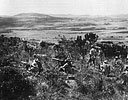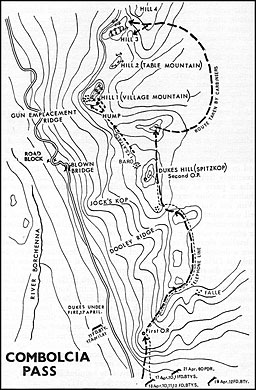
19
The Battle of Combolcia and Dessie
With Addis Ababa occupied more than a month before the target date set for the capture of Kismayu1 by the Cairo Conference of 2 December 1940, General Cunningham wished to employ East Africa Force to the west and south-west to reduce enemy resistance centred on Jimma, headquarters of General Pietro Gazzera's Southern Command, into which General de Simone's remnants had now retreated. East Africa Force would thus also secure the lines of communication in the Lakes sector for 12th African Division moving up from the area already probed by General Brink's South African Brigades.
On the day that 11th African Division entered Addis Ababa, 12th African Division Headquarters moved to Neghelli and took over from 1st S.A. Division both 21st and 25th East African Brigades and all Divisional Troops not proceeding to the Middle East.2 The 9th Field Company, S.A.E.C. (less No. 3 Section, which had been sent to assist 12th and 16th Field Companies on the Jijigga-Harar road) now also came under 12th African Division, and the first rain on 7 April heralded a period of tough campaigning for them, with the Juba coming down in flood just when pursuit beyond Neghelli required a bridge at Lugh Ferrandi.3
The 24th Gold Coast Brigade, less 3rd Gold Coast Regiment at Neghelli, was still under Force command, clearing the area Lugh Ferrandi-Oddur-Iscia Baidoa,4 but the stage was set for what had originally been planned as the major thrust on Addis Ababa--by way of the Lakes.
Serious problems in the Middle East overshadowed the plans of East Africa Force. The Germans had invaded Greece and Jugoslavia, the situation in Syria was causing concern, Rashid Ali had seized power in Iraq, Generals Neame and O'Connor had been lost in North Africa, Tobruk was invested and Axis forces were back on the Egyptian frontier by 10 April.5 General Wavell was anxious to move the whole of the South African Division and a large quantity of transport to Egypt as quickly as possible. He therefore ordered General Cunningham to advance north to open the main road from Addis Ababa to Asmara so that troops and transport could reach Egypt by embarkation at Mas-sawa or Port Sudan as well as by the Nile route.6
Accordingly, on 11 April, Brigadier Pienaar--who had gone forward from Addis Ababa to the Omo River to plan operations towards




